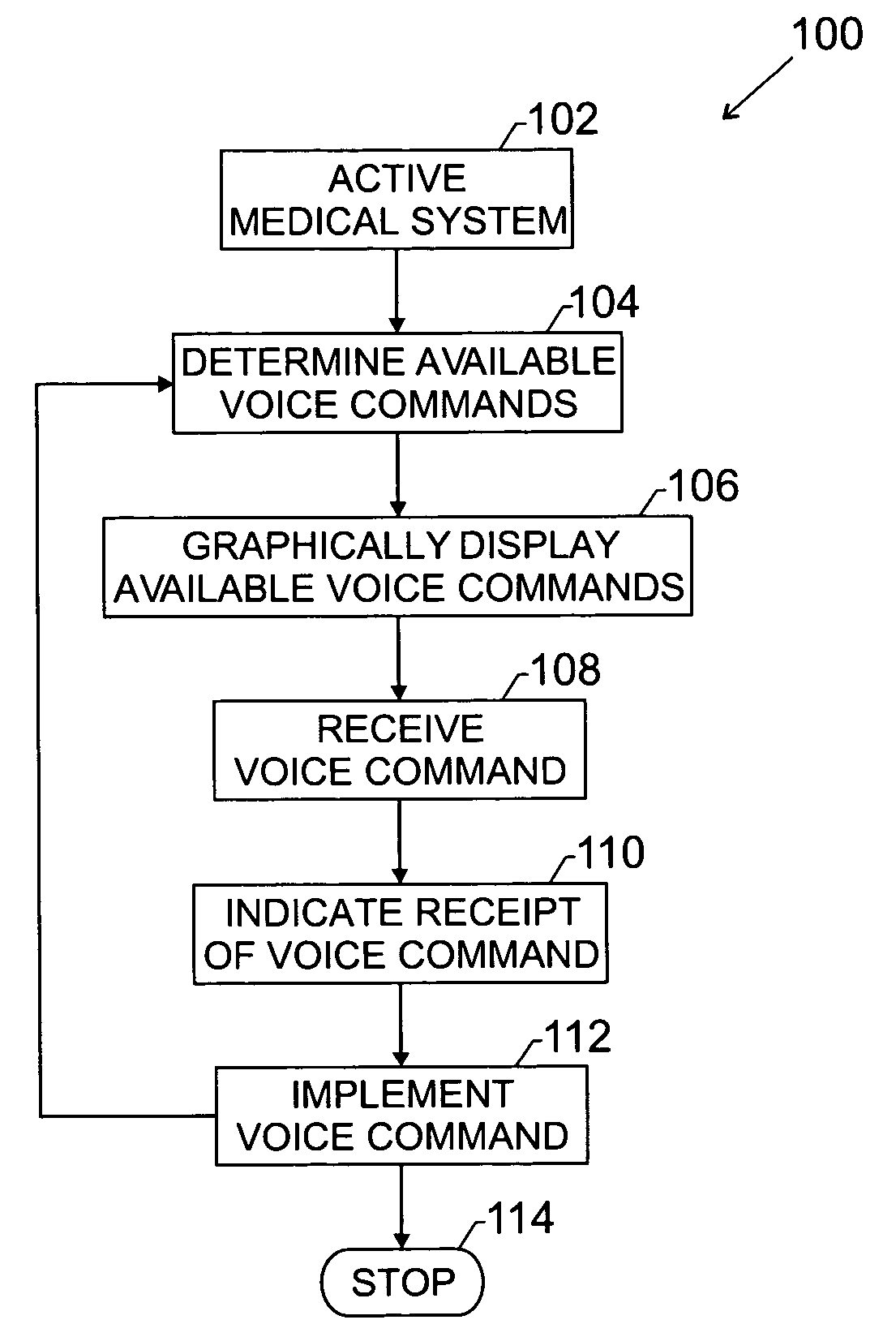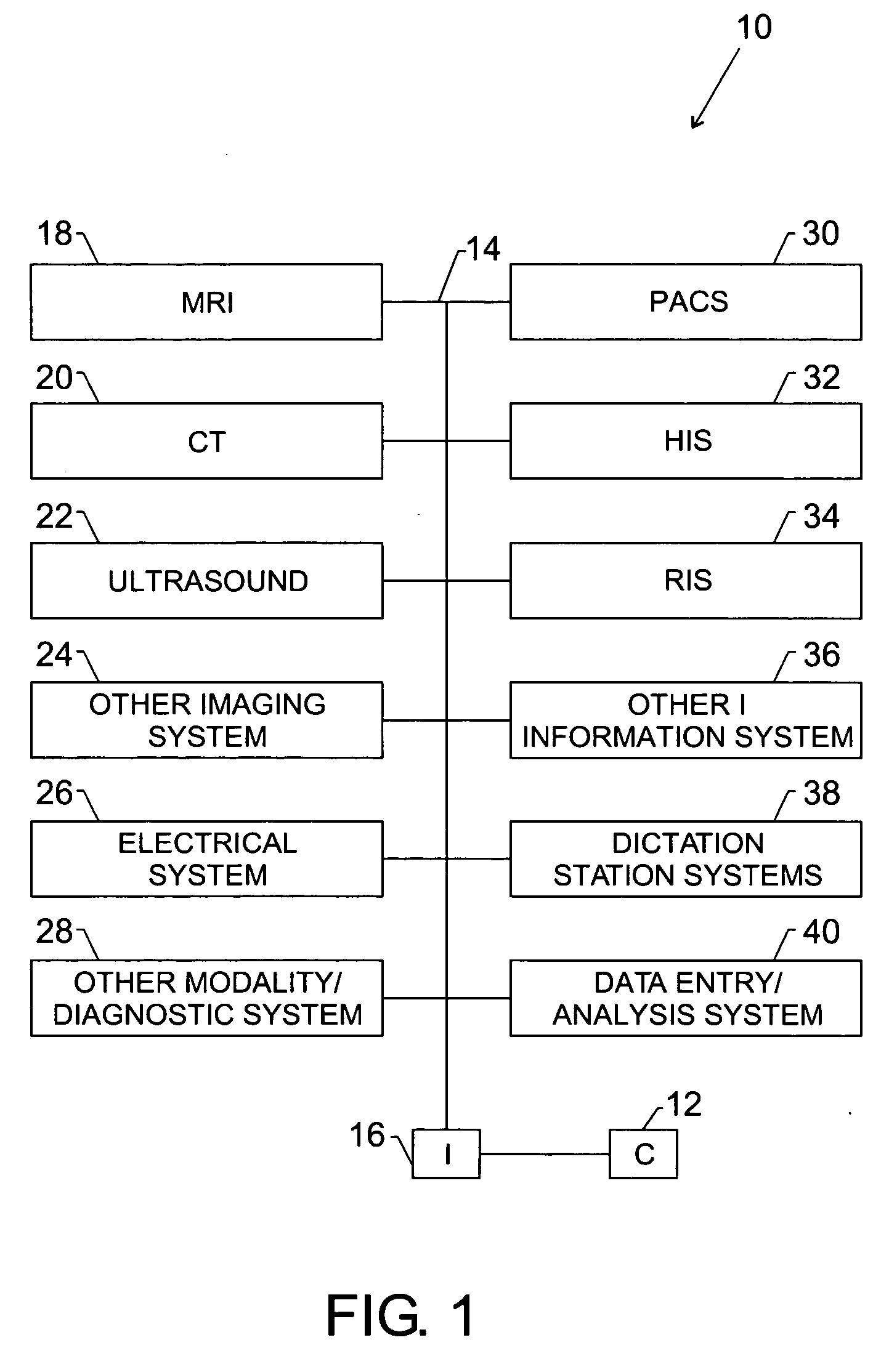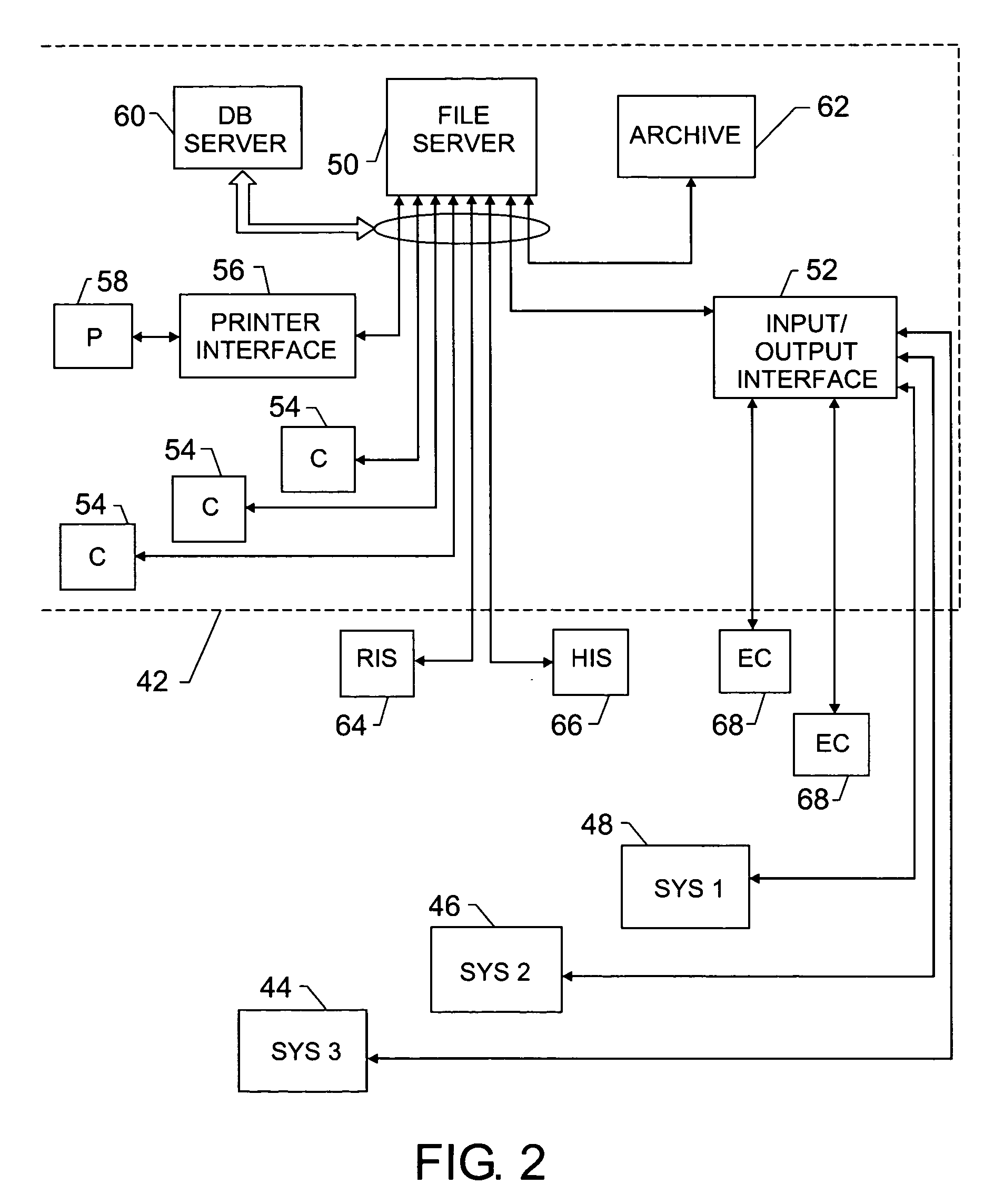Method and apparatus for contextual voice cues
a contextual voice and cue technology, applied in the field of medical systems, can solve the problems of affecting the user is placed in the burden of remembering the words on the interface, and the voice control system often does not recognize the words spoken by the clinician, so as to improve the workflow of clinicians and improve the adoption rate of voice recognition control
- Summary
- Abstract
- Description
- Claims
- Application Information
AI Technical Summary
Benefits of technology
Problems solved by technology
Method used
Image
Examples
Embodiment Construction
[0021] Turning now to the drawings and referring initially to FIG. 1, a diagrammatical overview of medical information and diagnostic systems networked within a medical institution 10 that may employ voice recognition control in accordance with the present technique is depicted. In this example, a client 12, such as a clinician, physician, radiologist, nurse, clerk, teacher, student, and the like, may access, locally or remotely, medical information and diagnostic systems and data repositories connected to a medical facility network 14. The client 12 may access such a network 14 via an interface 16, such as a workstation or computer. A medical facility network 14 typically includes additional interfaces and translators between the systems and repositories, as well as, processing capabilities including analysis, reporting, display and other functions. The interfaces, repositories, and processing resources may be expandable and may be physically resident at any number of locations, ty...
PUM
 Login to View More
Login to View More Abstract
Description
Claims
Application Information
 Login to View More
Login to View More - R&D
- Intellectual Property
- Life Sciences
- Materials
- Tech Scout
- Unparalleled Data Quality
- Higher Quality Content
- 60% Fewer Hallucinations
Browse by: Latest US Patents, China's latest patents, Technical Efficacy Thesaurus, Application Domain, Technology Topic, Popular Technical Reports.
© 2025 PatSnap. All rights reserved.Legal|Privacy policy|Modern Slavery Act Transparency Statement|Sitemap|About US| Contact US: help@patsnap.com



